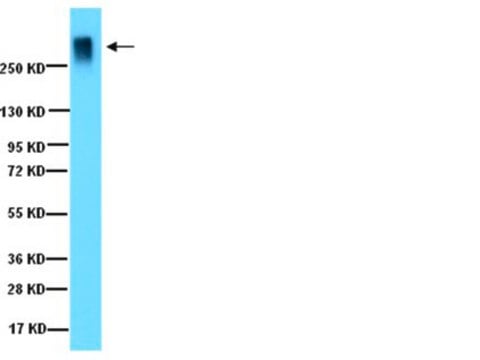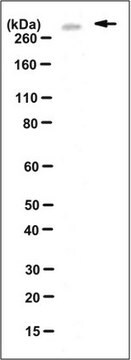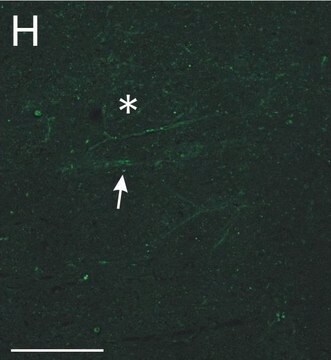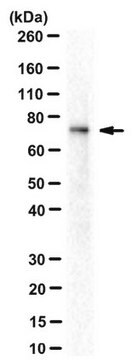MABT83
Anti-Aggrecan Antibody
mouse monoclonal, 6B4
Synonim(y):
Aggrecan core protein, Cartilage-specific proteoglycan core protein, CSPCP, Chondroitin sulfate proteoglycan core protein 1, Chondroitin sulfate proteoglycan 1, Aggrecan core protein 2
About This Item
Polecane produkty
Nazwa produktu
Przeciwciało anty-Aggrecan, klon 6B4, clone 6B4, from mouse
pochodzenie biologiczne
mouse
Poziom jakości
forma przeciwciała
purified immunoglobulin
rodzaj przeciwciała
primary antibodies
klon
6B4, monoclonal
reaktywność gatunkowa
bovine
reaktywność gatunkowa (przewidywana na podstawie homologii)
human (based on 100% sequence homology)
metody
immunohistochemistry: suitable
western blot: suitable
izotyp
IgG1κ
numer dostępu NCBI
numer dostępu UniProt
Warunki transportu
wet ice
docelowa modyfikacja potranslacyjna
unmodified
informacje o genach
human ... ACAN(176)
Opis ogólny
Immunogen
Zastosowanie
Analiza immunohistochemiczna: Reprezentatywna partia została użyta przez niezależne laboratorium w ludzkiej tkance chrząstki (Williams, R., et al. (2010). PLoS One. 5(10):e13246.).
Cell Structure
ECM Proteins
Jakość
Western Blot Analysis: 1 µg/mL of this antibody detected Aggrecan in 10 µg of purified protein from bovine tissue lysate.
Opis wartości docelowych
Postać fizyczna
Przechowywanie i stabilność
Komentarz do analizy
A1D1 oczyszczone białko z lizatu tkanki bydlęcej
Inne uwagi
Oświadczenie o zrzeczeniu się odpowiedzialności
Nie możesz znaleźć właściwego produktu?
Wypróbuj nasz Narzędzie selektora produktów.
polecane
Kod klasy składowania
12 - Non Combustible Liquids
Klasa zagrożenia wodnego (WGK)
WGK 1
Temperatura zapłonu (°F)
Not applicable
Temperatura zapłonu (°C)
Not applicable
Certyfikaty analizy (CoA)
Poszukaj Certyfikaty analizy (CoA), wpisując numer partii/serii produktów. Numery serii i partii można znaleźć na etykiecie produktu po słowach „seria” lub „partia”.
Masz już ten produkt?
Dokumenty związane z niedawno zakupionymi produktami zostały zamieszczone w Bibliotece dokumentów.
Nasz zespół naukowców ma doświadczenie we wszystkich obszarach badań, w tym w naukach przyrodniczych, materiałoznawstwie, syntezie chemicznej, chromatografii, analityce i wielu innych dziedzinach.
Skontaktuj się z zespołem ds. pomocy technicznej








